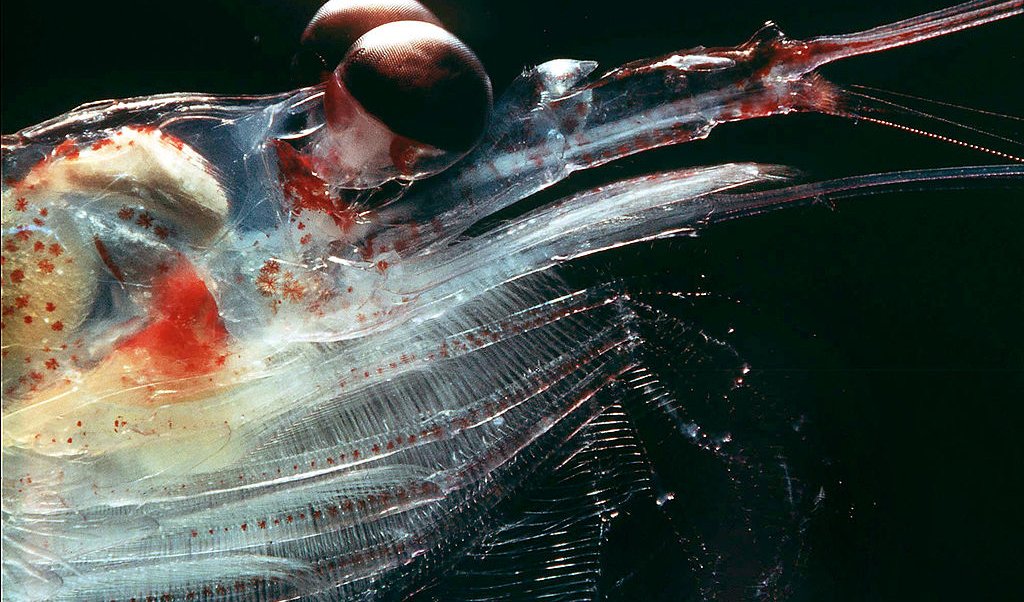Clever Krill

SO MUCH IN the sea seems to eat krill, and for this they have only themselves to blame. These shrimp-like crustaceans serve as staple foods for whales, seals, penguins, seabirds and squid, but only because they make themselves inviting targets by crowding together.
The very largest swarms of Antarctic krill (Euphausia superba) extend for kilometres, with billions roaming together at densities of up to 30,000 per cubic metre of water. The world’s biggest animal – the blue whale – only exists because krill crave company. If they stopped schooling for one summer they could starve their largest enemies to death. Whales don’t waste energy lunging at small schools of krill much less krill on their own.
Krill suffer an image problem – one I have just contributed to. They are looked upon as meals for something larger and seldom as animals of interest in their own right. In the film Happy Feet 2 Will the krill, voiced by Brad Pitt, bewailed his status as whale food: “So this is all we are … lunch.” This film did portray them as interesting.

Close-up of Antarctic krill. (Image Credit: Uwe Kils)
Krill are most plentiful in Antarctic waters, but there is an Australian krill (Nyctiphanes australis) in the seas around Tasmania north to about Sydney, and in New Zealand as well. I could mention its importance to short-tailed shearwaters (muttonbirds), Australian salmon and blue whales, but that would play to the stereotype.
So why do krill let themselves become lunch by roaming in crowds?
Travelling in a group can be efficient, as cyclists know when they ride in a line to cut down drag. Tests have shown that krill in a swarm swim more economically than krill on their own. Each crustacean follows the exact trajectory of the one in front, even if that means circumventing an obstacle that’s no longer there.
Mating prospects are another reason to keep together; there’s a lot of lonely ocean out there.
As it happens, krill attacked by a predator are not passive victims, darting away in all directions and often escaping. The flight of some krill close to a whale or penguin alerts others to the danger. I learned about krill dodging danger when I witnessed the capture of some by a net dragged behind the Australian Antarctic Divison icebreaker, the Aurora Australis. By watching sonar on a screen I could see they were evasive.
Steve Nicol, a krill expert at the Australian Antarctic Division, emphasised to me that krill are intelligent. Their swarm behaviour has inspired the krill herd algorithm, a computer program that may help us devise better traffic control systems.
Steve bemoans the way they are portrayed as mere meals. We should instead be admiring them for their extreme success. They can serve as staple foods only because they are one of nature’s outstanding winners. The Southern Ocean has an estimated 379 million tonnes of Antarctic krill – but that makes them sound like a commodity rather than the appealing animals they are.
READ MORE:
- What lies beneath Antarctica’s ice? Lakes, life and the grandest of canyons.
- Gallery: incredible Antartic photos.




